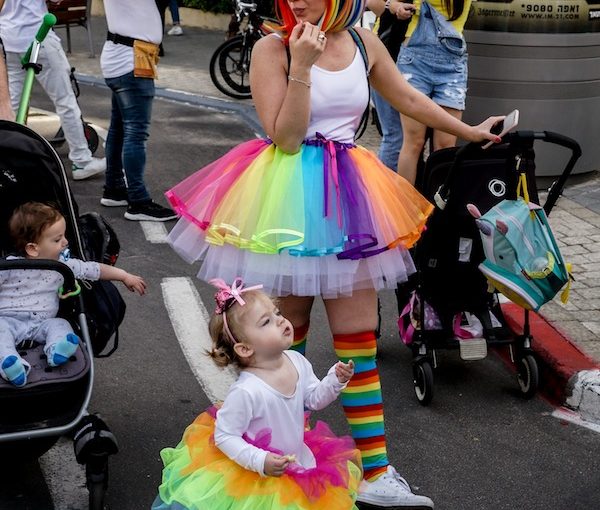Purim in Tel Aviv last year. (photo by Igor Zed)
What is the origin of wearing costumes on Purim? One theory relates to the fact that the Jews in the Purim story live in the galut (“exile,” outside of Israel). Haman says to the king: “There is a certain people scattered abroad and dispersed among the peoples in all the provinces of thy kingdom and their laws are diverse from those of every people; neither they keep the king’s laws.” One might say, these Jews in Shushan are the minority in a Christian country who disguise themselves or mask their identity by trying to dress like the majority and blend in.
Probably the closest explanation as to why we wear costumes is because Esther masqueraded as a non-Jew and dressed up as a queen. Esther also hid her assertiveness and her strength – and her Jewish identity – until she had no other choice. One source has said wearing costumes is to imitate the costume parties of the court mentioned in the story.
Another source says traditional Jews believe that G-d is hidden behind all the events of the Megillah. Although there is no mention of G-d in the Book of Esther, we believe he had a hand in the saving of the people. In a sense, he was masked or disguised and rabbis referred to G-d’s role as “hester panim,” or “hiding of the face,” which is also said to be a play on the words Megillat Hester, rather than the Hebrew name for the Book of Esther, Megillat Esther.
Philosophers and scriptural commentators believe that G-d’s name is omitted to emphasize the very point that G-d remained hidden throughout the story, but was nonetheless present and played a large role in its outcome. Megillat Esther may show that, although G-d may not be conspicuously present at times, he nevertheless plays an important role in everyone’s lives and that of the Jewish nation. In remembrance of how G-d remained hidden throughout the Purim miracle, Jews dress up on the holiday and many hide their faces.
Another explanation is in the Book of Esther’s eighth chapter, verse 17: “And many from among the peoples of the land became Jews, for the fear of the Jews was fallen upon them.” Non-Jews converted or perhaps pretended or disguised themselves as Jews for fear of Haman’s fate befalling them.
We do know for sure that the Book of Esther and the Talmud never discuss Purim costumes.
One source says the costumes and masks originated at the end of the 15th century among Italian Jews, influenced by the country’s carnivals. From there, the custom spread across Europe and to other countries where Jews lived, except perhaps the Far East.
Another source contends the custom could have originated in the medieval period in Germany and was an imitation of Christian carnivals, which took place around the same season.
Judah ben Eliezer ha-Levi Minz was a Venetian codifier of the 15th century, known as the “Mahari Minz”; he died in Padua, Italy, in 1508. In his responsa No. 17, quoted by Moses Isserles, the 16th-century rabbi and talmudist, in his book Orach Chayim (696:8), the Mahari Minz expresses the opinion that, since the purpose of the masquerade is only merrymaking, it should not be considered a transgression of the biblical law regarding dress, but he does not provide the origin of wearing Purim costumes. Furthermore, he permitted men and women to wear clothing of the opposite gender, even though this violates the biblical prohibition of cross-dressing (Deuteronomy 22:5). Some have speculated that it commemorates when Mordechai was dressed in regal clothing and escorted by Haman (Esther 6:11), a clear turning point in the plot of the story.
Although some authorities issued prohibitions against the custom of dressing up in costumes, people did not heed them and the more lenient view prevailed. Jews of the Middle East, however, did not start this custom until the 19th century.
Whatever its origins, dressing in costumes has been a tradition for many a Purim now, for adults and children alike. Purim sameach!
Sybil Kaplan is a journalist, lecturer, book reviewer and food writer in Jerusalem. She created and leads the weekly English-language Shuk Walks in Machane Yehuda, she has compiled and edited nine kosher cookbooks, and is the author of Witness to History: Ten Years as a Woman Journalist in Israel.

